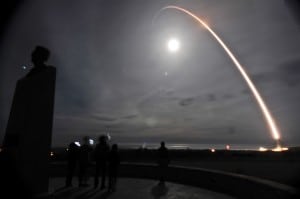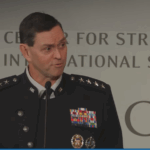
Adm. Cecil Haney, commander of U.S. Strategic Command, Tuesday underscored the importance of “stable, predictable funding” in sustaining the nuclear triad, as Sen. Ed Markey (D-Mass.) and Rep. Earl Blumenauer (D-Ore.) introduced the Smarter Approach to Nuclear Expenditures (SANE) Act this week.The bill would cut nuclear weapons spending by $100 billion over the next decade, including a reduction in Ohio-class Replacement posture, from 12 to eight planned subs. The bill would also trim warhead life extension programs such as the…













